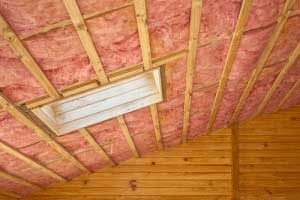Proper Attic Insulation Can Help Save You Energy Year Round
If you are under the impression that ample home insulation is only necessary for homes in cooler regions of the country, you may want to reconsider. In fact, a primary element of an effective home-efficiency strategy is insulation, and attic insulation is tops. Properly insulating your attic keeps your home warmer during cold weather and cooler when it’s hot and humid outside. Here’s how.
Heat Movement and Insulation
Heat energy naturally moves from a warmer to a cooler place. When it comes to the typical ventilated attic, heat movement works against home efficiency, comfort and your energy bills year round. During the heating months, warmer indoor air seeks to move to the cooler air in your attic. When your attic reaches unbearable temperatures during the summer, the heat transfers to your living spaces if you don’t have adequate attic insulation in place.
Types of Insulation
There are several types of insulation materials available to choose from. The type of insulation you choose largely depends on if you are adding to your existing insulation, retrofitting or undertaking new home construction.
The most common type of attic insulation used is fiberglass. Fiberglass insulation is a cost-effective solution for keeping your home more comfortable and your energy bills lower all year long. The federal Energy Star program recommends that attics in south Florida should be insulated up to R-60. This is approximately 14 to 18 inches of fiberglass insulation, depending on the R-value of the insulation you choose.
Two additional popular and effective insulation materials are cellulose and spray-in foam. Both of these insulation materials offer greater R-value per inch of insulation than fiberglass. Though, they tend to have higher initial costs. However, if you are undertaking new home construction or replacing your attic insulation, cellulose and spray-in foam offer a higher return on investment. If you have fiberglass insulation in place and it’s in good condition without mold, you can simply add more insulation.
If you would like to learn more about attic insulation for your south Florida home, please contact NisAir Air Conditioning and Heating today.

